#brian's grandparents were norwegian
Explore tagged Tumblr posts
Note
1 2 10 12 15 17
1- book you’ve reread the most times? I want to say 'Moominvalley in November' by Tove Jannson, I remember reading it a Lot because I got a lot out of it but didn't quite. fully get it, like I wanted something more? I should reread it
2- top 5 books of all time? 1) The Secret History - Donna Tartt (it's my favourite book I could talk about it for hours and hours) 2) The Song of Achilles - Madeleine Miller (spare me it is Beautiful) 3) Norwegian Wood - Haruki Murakami (I want to write like this) 4) Rebecca - Daphne du Maurier (also this, I want to write like this) 5) What's Eating Gilbert Grape - Peter Hedges (I like it but I don't know if I like it, but I definitely like it)
10- do you have a guilty fav? yes, see 'the Song of Achilles' above, it got popular on social media apparently, though I was recommended it by a friend! but it kind of has a reputation for being a 'booktok' thing apparently, I just like it because I genuinely like the Iliad and it's a good story
12- did you enjoy any compulsory high school readings? SO many honestly I don't care (honourable mention to 'To Kill a Mockingbird' and 'Blood Brothers' which were compulsory but not for my own classes) Dr Faustus - Christopher Marlowe A Streetcar Named Desire - Tennessee Williams Oranges are Not the Only Fruit - Jeanette Winterson Songs of Innocence and Experience - William Blake Goblin Market - Christina Rossetti and my absolute favourite, Dancing at Lughnasa - Brian Friel
15- recommend and review a book. I'm choosing to recommend 'the Secret History' by Donna Tartt. CW: death, drug use, mentions of incest, homophobia To give a spoiler-free overview, this book is about a group of students murdering a classmate, and what drove them to this point. It is told from the view of Richard, from a poor background, as he befriends the Classics students and becomes involved in their lives. It is written in such a way that's so immersive that it becomes difficult to separate yourself from Richard. The other characters feel so very real, that they'll stay with you long after. The depiction of Julian, the Classics teacher, is fascinating, and definitely bears thinking about. It's a heavy read, but it's an enjoyable, well-composed read, and it will stay with you always.
7- top 5 children’s books? 1) the Sea Horses series - Louise Rennison (my favourite books as a kid!) 2) the Chronicles of Chrestomanci - Dianna Wynne Jones (yes they are technically kids' books and they are So Good) 3) Double Act - Jacqueline Wilson (I'm a '90s kid' I have to have a JW book here it's the law) 4) the Internet Vet books - Tony De Saulles (I was obsessed with these like for real) 5) Charlie and the Chocolate Factory - Roald Dahl (I read this every time I visited my grandparents)
6 notes
·
View notes
Text
Well, it’s been a year. Truly. I haven’t blogged in a year! Not since my EPIK return to Korea (wink at y’all English teachers over there) for MinShik & Ara’s wedding.
And here those same people are celebrating their one year anniversary by having their first baby ON THAT DAY. That’s some Gattaca-level skill, I tell ya.

Lots has changed. LAWD. Yes. Grab yourself a low-carb snack because y’all about to get the deets.
Jobs
Two promotions at Grubhub and a sabbatical-turned-bowing-out at Titan Gym ALL IN THIS PAST ONE YEAR.
In January I became a Senior Sales Executive with Grubhub; it was a huge, out-of-the-blue honor and when I asked ‘what’s different than my current job?” my boss replied “Its what you’re already doing with the team, I’m just going to pay you for it.” How cool is that?!
Actual photo of said boss:

Seriously one of my favorite things in my career was in our first ever one on one development meeting last year (right *after* the Korea trip) the first thing I said was “I want you to know I’m in grad school for training and development and that’s what I want to do long term.”
His reply? “OK, let me hook you up with the right person who’s heading up training.” Literally the next week she got me in a classroom training new hires in a session 1x every 2 weeks. MONEY/MOUTH AND ALL THAT. When does that happen?!
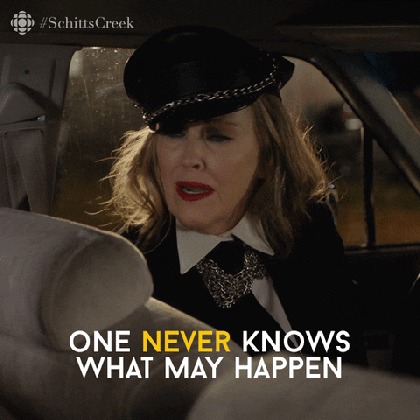
And this past April when a new role opened up to become a sales trainer for new hires he recommended and she championed me for the role, which started May 1.
Y’all. I have never felt the Conan mantra of “If you work really hard and you’re kind, amazing things will happen” more. I joined Grubhub just to get a sales paycheck and have a regular schedule to pursue my passions and here this place that I thought would be a job I wasn’t going to put my heart into has given me such gifts. Managers that believe in me and CREATE JOBS that I wasn’t even aware of. I’m very blessed.
Now I’m the “Learning Solutions Associate” (ie. Non-Corporate Sales & Account Advisor Trainer) for all employees in those departments for Grubhub Inc. Nationwide. I’ve trained over 75 people in the last 5.5 months. That is bananas to me and I’m so grateful. All that in a year and a half at this company.

Because of that role shift and wrapping up grad school I knew that my time at Titan Gym was coming to a close. I have loved and sweated and bled and cried in that place – sometimes all at once – and I leave with so many good memories and relationships. I felt like I couldn’t be both throwing my heart (and fists) into learning & teaching Krav while also trying to originate a role at Grubhub.
So with a final rooftop drinking session and countless hugs I left (by choice) no longer an instructor at Titan Gym. I’m still a certified Krav Maga Level 1 Instructor through KMA and I know if I’m ever interested in getting back into it that Daniela and Ivo have my back. And if you need a place to kick ass, feel stronger or find mental toughness I will recommend Titan Gym to the moon and back again and again and again.

WHEW.
2. School
Yes, I finished my grad program at University of Wisconsin – Stout and now have my graduate certificate in Instructional Design. I need to frame that fancy piece of paper sometime soon.

3. Comedy
BUT WHAT ABOUT THE LAUGH SQUAD?! Oh man y’all. So last October in the week after I got back from Korea I auditioned for a ComedySportz House Team and was cast into the most perfect circle of weirdos by two insanely talented coaches who happened to have the exact same initials – HMS. So naturally our team name became “Pinafore” after the famous Gilbert & Sullivan comic opera ‘HMS Pinafore.’ I have still never to this day heard any music from it although I did briefly glance through the Wikipedia page.
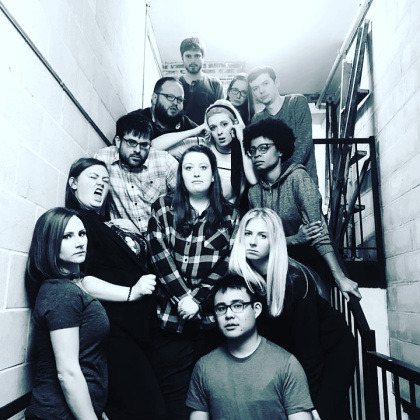
No, I didn’t realize we were all serving fierce face. Or at least my genre of fierce face. Our team just had our final show on 10/6 and it has been a journey. I feel like I’ve grown with such a great team with depth and tears and joy. I have peed myself a little laughing so hard, which I can admit now that the team is done. I mean, I could have admitted it before but why BOTHER.
Truly I have loved the CSZ House Program; auditions for the next round are in November and I’m excited to see what the next group of people I get to fall in love with looks like!

Other things I’ve been blessed to yuk it up on/with: I got cast into a RIFF Music Improv camp which has had me perform 3x with a stone-cold group of short-form music improvisers that HAVE PIPES, y’all. Some of these people I’ve watched perform for years in music improv and it’s an honor to strap on a Britney mic and make up songs for an audience with them.

I’ve also done 2 seasons of MINt (Music Improv Night) at the Annoyance; such an open space to trying weird and beautiful things with music improv and our voices. If you’re looking for a community to fall in love with, the MINt crew is a good one. 4 teams every 4 months and you get such a wide range of experience, skills and strange, hilarious songs.
There’s been a few one-offs performing with friends’ groups and even a couple shows with some MI people I met in iO’s Music Program as an indie group named “AirBRB.”

I’m moving into a season when I’m not sure when my next show is; it’ll be light this next month, which is kind of a fun thing. I’ll miss it. But I think it’s healthy to have a breather and come back hungry, whenever the next show is. And you never know when someone might text you at 4pm about a show that night at 1030pm and you gotta be ready to make believe with the best!
4. Health
OOOOOHHHH fun. Let’s talk about it! Since last year when I got my Krav Maga instructor cert in July (shoutout to the 3am Protein Squad) I’ve let things slip a bit. And why not?! When you survive that kind of thing you deserve to let yourself chill. But…I didn’t really reign it in. I was doing ok; maintaining some cardio but I knew things needed to step up. I was getting a little burned out on Krav. Here’s my 7am face on the way to teach class:
I let myself write excuses and they added up. Once I was done punching/kicking regularly I did CrossFit for a few months – it was great and ya girl loves heavy weights – but the price was really high. Especially when I could be going out of town to our Phoenix office for work up to once a month, missing a week at a time. It was an expensive habit.
So I jumped back into going to LSAC (Lincoln Square Athletic Club) regularly – it’s been 3 weeks in and I’m kind of loving my schedule:
Mondays – Pole Class at Brass Ring (I KNOW) and it’s so fun. Such an empowering environment and an hour flies by. Its slow but I see progress! And thigh bruises.
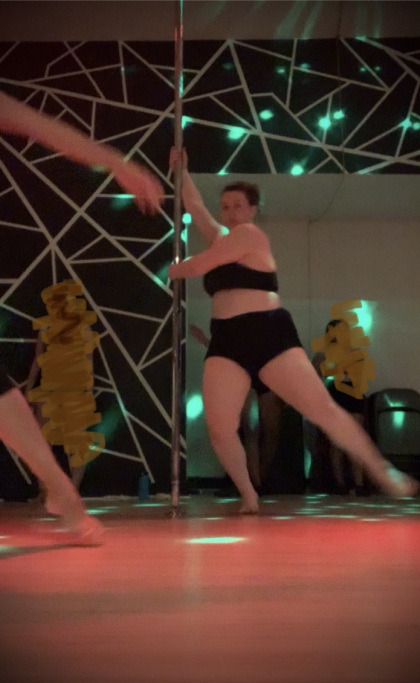
Tuesdays – Workout at LSAC (trying to follow the schedule Brian (see Fridays) gave me the week before)
Wednesdays – Volleyball with friends at LPHS – y’all we had a double header last week and I burned 1,448 calories in 1 hour and 55 mins. WE WORKIN’.
Thursdays – Improv Day (aka rest and do some make believe in comedy class)
Fridays – Personal Training with Brian at LSAC
Saturdays – Yoga (at home right now using an Apple TV app but maybe at LSAC in the future)
Sundays – Intro to Olympic Weightlifting with Keith at LSAC (today was the first one; I did a 65lb bar snatch from shins to above my head! 9 times! Y’ALL! SHE BACK!)
Also I started attempting/doing a Keto & intermittent fasting on 10/1; it’s been a little rough but we’re getting into the groove of it. That first week, candidly, sucked. The low carb/Keto flu thing is for real. But now I’m used to it; the 12-8 fasting part is honestly not that hard now. Very manageable. It’s more the carb counting thing of keto that is taking slow (but progressive) shape.

5. The Rest
a. Photography
I know everyone has a camera in their smartphone – I’m doing some photography learning – I bought myself a Canon T6i DSLR last year RIGHT BEFORE starting grad school so I hid it in the closet from myself until school was done in May. I’ve taken some pictures I’m proud of and I’m working my way through a couple Lynda.com (grad school got me a free account) photography courses to learn the camera. I’m a student of it right now for sure but here’s a few photos I’m proud of:
b. Norway
I found out last year that I’m 1/8 Norweigan; that doesn’t sound like ‘a lot’ but honestly I’ve never really thought about it. I generally classify my heritage as ‘SPF 75’ but have always known our family is generally German with some crossover to other classically pale squads (Irish, probably English, other various tribes of roving wild-haired people on/around Hadrian’s wall, etc).
Last year in October someone posted in this Women of Chicago Comedy Facebook group I’m in about a Norwegian TV show that 1. Flies you to Norway and 2. You good-naturedly compete with other Norwegian-Americans to win $50,000. SO I APPLIED OF COURSE and got to ask my mom and grandparents questions over iMessage about my heritage. Apparently one of my great-grandmas was first-generation American, born in the US. Her parents both emigrated from Norway in the early 1900s to Washington State, near Ballard. So…if one of the 8 people that made me is full-blooded Norwegian…then by the power of Punnett Squares or whatever that means I’m 1/8 Norwegian, right?

ANYWAYS I did not get cast but I just realized they’re auditioning again so I’m going to throw ye olde application back in there. 1. Because it sounds fun and 2. Norway is GORGEOUS and 3. I did promise Neal Carlin that I would apply again. He’s gone in Italy doing an insanely cool apprenticeship so the least I can do is fill out info about my LIFE.
Our family doesn’t really do any celebrations of heritage. My great-grandma Harriman (she of the Norwegian blood) made lefse for Christmas, but I never really understood the connection as a kid. She passed when I was in high school and none of us kids ever learned to make it with her. Also, keep your traps shut but my real goal if I get on this show is to learn to make Fattigman cookies and then make them with my Nana for Christmas. KEEP MY SECRETS, INTERNET.
I think there’s a real beauty in appreciating where you came from and knowing you are a part of a legacy of choices – good ones, bad ones, ones that had to be made one way or another – and then choosing how you want your part of the story to be written. Sitting under the Northern lights and walking on glaciers would be a pretty jaw-dropping moment in life; 10/10 I’d be crying frozen little tears of joy. So we’ll see! I’m applying!

c. Travel
I’m going to DC in less than 2 weeks – I’ve never been to DC AND I haven’t seen David Brown in 4+ years in person. That’s bananas to me. I genuinely cannot believe that there’s not some time/space blanket fold that I jumped through because it CAN’T have been four years.
But the internet says it has. So myself, Bekah, Adam & Dana (plus maybe their dog Millie) are all meeting up with David in DC October 25-27 and I could SQUEAL I am so excited.
I went to Ohio in March just to see my loves Xander and Trace and get drag-ified myself. I learned that clip on earrings are the reason beauty = pain and that stick on nails are NOT for me. But I looked great.
d. Experiences
I saw my first Broadway shows in the past year – I don’t know what took me so long! I saw Hello Dolly, Book of Mormon, Hamilton. Les Mis, Falsettos – I WANT TO SING EVERYTHING.

I went to the Shedd Aquarium on Thanksgiving – it was BEAUTIFUL and uncrowded and my ticket was free – cue v v thankful.

I saw Conan O’Brien’s show in Chicago and met Aaron Bleyart, who’s blog(s) I have followed for over TEN YEARS.
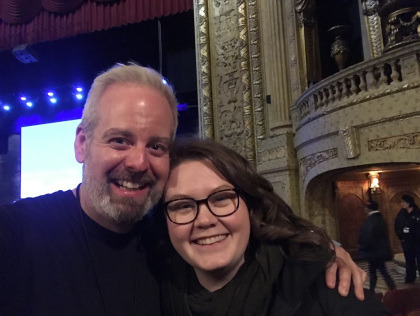
Passed my Krav Level 3 student test and Muay Thai Level 2!
Survived the Polar Vortex in Chicago when it was over -20 degrees below zero. This is the *inside* of my windows.

My parents came to Chicago for Father’s Day! The umbrella is my Mom hiding from the camera as all 3 of us eat Chicago Dogs outside the Field Museum. Also, I went to the Field Museum.
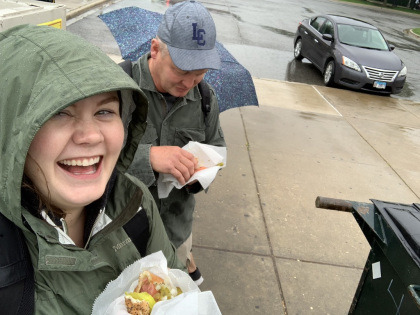
I went to Arizona 3 times – February, May & August – for work and to visit family. What a cool, weird mix of colors. I saw the Grand Canyon and cried a little behind my sunglasses as my family pretended to not notice.
I saw a Seattle-based artist, SYML, who’s work I love not once but TWICE. Also saw Dean Lewis at the same concert and fell in love w his new album.

Saw a bajillion improv shows, learned which lipsticks look good on my skin tone and saw so many people I love.
What. A. Year.
More updates, more often, from this face:

A Blog I Pay For and Rarely Update: UPDATED! Well, it's been a year. Truly. I haven't blogged in a year! Not since my EPIK return to Korea (wink at y'all English teachers over there) for MinShik & Ara's wedding.
#aaron bleyart#airbrb#alt for norge#brass ring#broadway in chicago#canon t6i#careers#chicago#comedy#comedysportz#conan#grubhub#improv#instructional design#krav maga#l&d#life#lsac#norway#personal#self defense#shedd aquarium#syml#titan gym#uw stout
0 notes
Text
RIFF 2018: Woman at War, Jonas Mekas Exhibition and Camilla Strøm Henriksen on Phoenix
by Matt Fagerholm
October 8, 2018 |
Print Page Tweet
“You know who would’ve loved this movie? Roger Ebert!” declared Anne Hubbell, founder of Tangerine Entertainment, during our chat at the Reykjavík International Film Festival. She was discussing Yann Gonzalez’s cheerfully blood-spattered melodrama “Knife + Heart,” and I couldn’t help agreeing with her, considering Ebert’s love of Brian De Palma and bold genre mash-ups including his own, “Beyond the Valley of the Dolls.” A day after I posted my enthusiastic review of the picture, Hubbell and her fellow jury members gave “Knife + Heart” RIFF’s top prize—the Golden Puffin, awarded to first or second-time directors—praising Gonzalez’s ability to defy labels “using confidence, humor and a thrilling juxtaposition of love and loss.” Earning a Special Mention was “Styx,” Wolfgang Fischer’s riveting thriller about the refugee crisis that is still in the running for the LUX Prize, presented in November by the European Parliament. Nominated alongside it is Benedikt Erlingsson’s “Woman at War,” a superlative example of Icelandic cinema, showcasing not only the landscape’s distinctive beauty but also its inherent drama.
Advertisement
Through various tourist sites are accessible by road along the country’s perimeter, the vast majority of Iceland consists of uninhabited terrain, with sand and volcanic glass covering a desert terrain well over 12,000 miles in size. This is the sort of desolate locale ripe for a suspenseful set-piece, and as Halla—the notorious activist in Erlingsson’s film—scampered about its rugged surface, outwitting every helicopter and drone aiming to take her down, I was reminded of Cary Grant’s infamous battle with the deadly crop-duster in Hitchcock’s “North by Northwest.” As played by Halldóra Geirharðsdóttir with winning perseverance and warm eyes that can fire daggers without warning, Halla is a woman after Mildred Hayes’ heart, so determined to raise awareness about industrial corruption that she has no qualms with torpedoing a few power lines in the process.
When she marches toward the camera to a quirky militaristic anthem evocative of “Moonrise Kingdom” during the opening credits, the camera pans over to reveal a three-piece band performing the soundtrack live. This conceit soon proves to be much more than a one-time sight gag a la Count Basie’s cameo in “Blazing Saddles,” as the musicians repeatedly materialize along with a Greek chorus of sorts, embodying the conscience and tireless spirit of Geirharðsdóttir’s protagonist in melodic form. The score by Davíð Þór Jónsson, who also composed the music for Erlingsson’s previous festival favorite, “Of Horses and Men,” ranks among the year’s best, emerging as a literal character in the movie without diffusing any tension or emotional nuance. Geirharðsdóttir is equally delightful as Halla’s twin sister, Ása, a bohemian yoga instructor whose dislike of extremism may make her an unlikely ally in her sibling’s uncompromising crusade.
Halla’s rage at profit-driven forces threatening to forfeit our survival by ruining the environment beyond repair couldn’t be timelier, especially when the government attempts to antagonize her by claiming that she has declared war on working people (there are echoes here of Trump’s motives behind championing the coal industry). How Erlingsson and co-writer Ólafur Egilsson go about tackling this topic is by turns poignant and comedic, leading to some well-earned moments of catharsis that had me cheering, such as when Halla—clad in a Nelson Mandela mask—yanks a drone out of the sky before smashing it to bits. Her ambivalence toward bringing new life into the world has caused her to put plans for adoption on hold, but when a four-year-old girl is left orphaned by the war in Ukraine, her attitude toward the future begins to shift. The film’s lyrical final shot comes as close to encapsulating mankind’s current self-imposed predicament as any I’ve seen in 2018.
Advertisement
Photo of Jonas Mekas by Joanna Kedzierska.
Jonas Mekas, the godfather of American avant-garde cinema whose diaristic chronicling of everyday life predated the modern internet by several decades, was set to be RIFF’s Guest of Honor until ill health caused him to reluctantly cancel. The 95-year-old auteur was still eager to conduct his scheduled masterclass vila Skype, and his exuberance was euphoric to behold. At one point striking a kung fu pose, Mekas displayed the energy of a man one-fifth his age, consistently punctuating the word “cinema” with an exclamation point. He rejects work that lingers on misery, opting to continue crafting “a celebration of life on this planet.”
Born in Lithuania a day before Christmas, Mekas vividly recalled in a 2015 interview how his brother gave him a still camera on his birthday, which just so happened to be the same week that Russian tanks rolled into his country. His first-ever pictures were taken of the tanks, causing a disgruntled lieutenant to rip the camera from his hands and destroy the footage. After being imprisoned for eight months with his brother in a labor camp, they eventually settled in New York, where the filmmaker still lives today. With online media liberating his intuitive creativity just as it did for David Lynch, Mekas launched his own site in 2006, where his experimental uploads continue to push the form in provocative ways. I particularly love his manifesto on the eternal youth of cinema, produced in honor of its centennial, where he insists that the art form can never age because “it is always beginning.” He considers his camera an extension of his hand, and will continue to use the same one until it needs to be replaced (he currently operates a GoPro).
Like a Flower in a Field, Mekas’ first solo exhibition in Iceland, debuted two days prior to the masterclass at Reykjavík’s Ásmundarsalur art gallery. Skillfully curated by Francesco Urbano Ragazzi, the exhibition featured three monitors compiling excerpts of the filmmaker’s online diaries. Likening the sprouting of flora in New York with the spontaneity of his artistry, Ragazzi selected 45 images of flowers captured in Mekas’ work to align the gallery windows, bathing the white-walled room in colorful light. A collection of handwritten statements from the director also covered the walls, my favorite being, “We do not need perfection! We need nervous breakdowns!”
Advertisement
Perfection certainly wouldn’t be the word to describe the masterclass itself, which was marred by poor reception that rendered Mekas’ answers nearly unintelligible. Every time his voice cut out, I silently recited the Icelandic mantra taught to me by the festival’s indispensable guest coordinator, Martiina Putnik: “þetta reddast,” meaning, “Oh well, it will work itself out somehow!” And work itself out it did, thanks in large part to Mekas’ indomitable spirit. So expressive were his gesticulations and jovial grins that they told us everything we needed to know, even when his words were obscured. He loved interacting with the audience, waving to each of us on the monitor as the camera scanned the crowd. I asked him about his belief in the importance of changing one’s mind—which he memorably voiced in defense of Paris Hilton—and how the chronically divided American populace could benefit from this perspective. This question elicited one of Mekas’ most animated responses, arguing that we are doomed to rot if we remain stuck in one way of thinking. He concluded the Q&A by taking a recording the audience with his GoPro (pictured above), making us the latest addition to his intimate oeuvre.
[embedded content]
Among the best movies I saw at RIFF was “Phoenix,” the first directorial feature effort of Norwegian actress-turned-filmmaker, Camilla Strøm Henriksen. She made her film debut in Martin Asphaug’s acclaimed 1989 drama, “A Handful of Time,” for which she earned the Best Actress prize at Norway’s Amanda Awards. During our chat at RIFF, Henriksen credited the picture with bringing a new energy to her nation’s cinema, increasing the number of high-quality films that were made there. Her interest in directing spawned from her frustration with the acting business and the difficulty in acquiring good roles, ultimately finding that she preferred telling stories rather than acting in them. Henriksen’s extensive experience in directing television, including over 100 episodes of Scandinavia’s longest-running soap, “Hotel Cæsar,” was an ideal training ground for the tight turnaround of independent filmmaking, since it required her to shoot a great deal in a small span of time, moving fast while being clear with her intentions.
The heroine of “Phoenix” is Jill (Ylva Bjørkaas Thedin), a girl on the cusp of celebrating her 14th birthday, whose unstable mother (Maria Bonnevie) and estranged father (Sverrir Gudnason) have caused her to become the sole parental figure in her family. Jill’s younger brother, Bo (Casper Falck-Løvås), may be pint-sized, but he’s also wise behind his years, able to see directly through the lies he’s fed. Henriksen first began developing “Phoenix” 12 years ago, around the same time I began my career as a published film critic. Both of us have vivid memories of seeing Guillermo del Toro’s 2006 masterpiece, “Pan’s Labyrinth” on the big screen for the first time, an experience that Henriksen found immensely influential as she crafted her own psychological portrait of a young girl.
Advertisement
“I saw it eight times and loved it, even though fantasy is not really my kind of thing at all,” Henriksen told me. “I was inspired by how seamlessly the director blended fantasy with melodrama full of pathos. My grandparents had worked in puppet theatre, and I grew up with the Norwegian fairy tales that they performed. The monsters in these stories externalized the fear of things in life that are too terrifying for children to fully comprehend. I thought that element would fit naturally into this family drama, where we are authentic in the psychology without allowing it to become the sort of social realist picture that bores me to death. Having the story be viewed from Jill’s heightened and subjective point-of-view is what draws in the audience. She has a very strong ambivalence toward her mother. In a way, she hates her and deep down, wants her dead, but that’s something she could never admit to herself. That little monster in the film externalizes her resentment and fear of her mother—all these feelings that are still undigested.”
Henriksen makes a point of not specifying the insidious disorder afflicting Jill’s mother, and says that no particular research was needed since the story was based on events from her own childhood. Her years of therapy have been immensely helpful, serving as a form of research by teaching her so much about herself. In terms of understanding the mind of an actor, Henriksen draws from her own personal experiences as well. She is well aware of how actors must bare their souls onscreen, and won’t be able to do so unless they feel they are in safe hands. Thedin’s remarkably assured and unmannered debut performance is a testament not only to her talent but the mastery of Henriksen’s direction.
“From the moment we first met, Ylva had this wonderful open curiosity about her,” said Henriksen. “Not only did she have an intuitive understanding of drama, she also had a great sense of empathy that really touched me. That wasn’t something that I was specifically looking for, but I realized when I met Ylva that this quality is important for the role of Jill. She taught me a lot, actually, because I initially had been looking to cast children whom you could sense were carrying a big burden. Both Ylva and Casper are very resourceful and you feel that they will survive even as their parents go under. The film is an ode to the strength and courage of children. I wanted to show that in a truthful way without being simplistic. There is no clear solution for their plight, but they have each other.”
Advertisement
Swedish production designer Eva Norén, whose credits include Tomas Alfredson’s 2008 landmark, “Let the Right One In,” collaborated with Henriksen to find subtle ways in expressing the characters’ inner journey through the mise-en-scène. Nearly the entire first half is set within the family’s claustrophobic loft, aside from one entrancing sequence set in Jill’s class, where she develops a crush on the boy seated next to her. The educational rainforest footage projected onto the screen before them makes it appear as if they being doused with water, a deft metaphor for the bracing sensations being felt by the girl.
“It’s the one moment where Jill finds a window to the world opening up,” noted Henriksen. “So much of her focus is inwards, since her life is centered around taking care of her family, while trying to get her mother on her feet. She has very little space to actually dream or invest in her own life—in a life that is outside the world of the family. With her mother planning for a job interview and her father due to arrive home in time for her birthday, Jill is now clinging to enough hope that enables her to have a moment of freedom. That scene in class is where she finally opens herself up to something else—her own sexuality—before her hopes are crushed. The subtlety with which this is conveyed came about through the writing process. Though the shooting script was quite close to the first draft, it came together only after a great deal of decluttering. I knew in my heart what I wanted the ending to be, but I didn’t trust it until that last draft.”
“Phoenix” will be released this Friday, October 12th, in Norway, and it is my deep hope that the film will receive the U.S. distribution it deserves. In my review published during the festival, I likened the film to Charles Laughton’s 1955 knockout, “The Night of the Hunter,” an enduring classic that I was delighted to hear Henriksen cite among her chief references. The haunting rendition of “Fly Me To The Moon” sung by a young girl over the end credits reminded me the famous sequence in Laughton’s film, where little orphaned Pearl (Sally Jane Bruce, dubbed by Betty Benson) comforts her brother by singing “Once Upon a Time There Was A Pretty Fly” as they sail along a river at night. Whereas Robert Mitchum’s sociopath-in-preacher’s clothing was the evil force tearing apart the children’s family, in the case of “Phoenix,” it is the even scarier scourge of mental illness.
Advertisement
“My music supervisor, Goran Obad, and I thought it would be lovely to have a young girl singing at the end,” recalled Henriksen. “We wanted somebody who sung well, but not too well—who didn’t hit all the notes. So he found a 14-year-old girl who isn’t an established star, but is obviously a good singer, as you hear during the credits. What I hope the song conveys is that the children were able to take something positive from their parents. Jill and Casper share a resourcefulness and an ability to express love that is, in some way, indicative of how they were brought up. Even though it’s going to be hard for them moving forward, they will be able to find joy in life.”
If I were asked to compare RIFF to any previous festival I’ve attended, the closest equivalent would be Ebertfest, the jubilant movie marathon annually held at Roger Ebert’s alma mater in Champaign, Illinois. Both events prioritize the moviegoing experience above all else, and celebrities are invited not to promote a project but to have their work honored. The stars aren’t on hand for interview opportunities, but that makes one’s interactions with them all the more meaningful. Mads Mikkelsen, recipient of this year’s Creative Excellence Award, chatted with me about how his brilliant 2012 collaboration with director Thomas Vinterberg, “The Hunt,” has become all the more radical in our current sociopolitical climate, challenging us to break the stigmas surrounding what can and cannot be discussed in regards to allegations of abuse. I treasured the opportunity to tell honorary guest and jury member Shailene Woodley that her performance in James Ponsoldt’s 2013 gem, “The Spectacular Now,” is one of the best I’ve ever seen. As the camera holds on her character during the film’s breathtaking final moment, every conflicted feeling she harbors for her ex ripples across her face, suggesting the many directions she could go, none of which are guaranteed.
After Helga Stephenson, former head of the Toronto International Film Festival and mentor to RIFF festival director Hrönn Marínósdóttir, was honored at a festive ceremony, she spoke with me about her fond memories of Ebert, whom she knew since the late ’70s. The tribute to Stephenson was held at Bessastaðir, the residence of Icelandic president Guðni Thorlacius Jóhannesson. When I got the chance to meet the president, I told him how refreshing it was to see a literate head of state who was knowledgable about history, supports universal health care and speaks in complete sentences. He savored every last one of my well-deserved compliments, asking me to “please continue,” before getting swept back up into the crowd. Photographer Donald Gíslason, a longtime friend of Guy Maddin’s, had endless great stories to share about Icelandic culture and the vibrant history of the festival, which has always taken full advantage of its natural surroundings (back in 2015, a screening took place in a “secret cave”). I also must give special thanks to photographer Joanna Kedzierska for her excellent film recommendations, her impromptu tour of Reykjavík’s nightlife and most of all, her friendship.
Advertisement
During my daily strolls to screenings at the Bíó Paradís, I passed a costumed singer (pictured above) who serenaded passersby with beautiful tunes, one of which moved me so deeply that it became the official anthem of my entire trip. “Goodnight, Irene,” the American folk standard first recorded by Huddie ‘Lead Belly’ Ledbetter, nailed the bittersweetness I felt as one of the greatest adventures of my life came to a close. As the plane lifted off the runway at Keflavík Airport, taking me back to a country of toxic 24-hour news cycles and misogynistic Supreme Court justices, my paraphrased version of Ledbetter’s song ran through my mind…
Goodbye, Iceland
Goodbye, Iceland
I’ll see you in my dreams
Next Article: NYFF 2018: Ray & Liz, Asako I & II, Hotel by the River Previous Article: NYFF 2018: Divide and Conquer, What You Gonna Do When the World’s on Fire?, Film Noir Revivals
Please enable JavaScript to view the comments powered by Disqus.
comments powered by
Source: https://bloghyped.com/riff-2018-woman-at-war-jonas-mekas-exhibition-and-camilla-strom-henriksen-on-phoenix/
0 notes
Text
RIFF 2018: Woman at War, Jonas Mekas Exhibition and Camilla Strøm Henriksen on Phoenix
“You know who would’ve loved this movie? Roger Ebert!” declared Anne Hubbell, founder of Tangerine Entertainment, during our chat at the Reykjavík International Film Festival. She was discussing Yann Gonzalez’s cheerfully blood-spattered melodrama “Knife + Heart,” and I couldn’t help agreeing with her, considering Ebert’s love of Brian De Palma and bold genre mash-ups including his own, “Beyond the Valley of the Dolls.” A day after I posted my enthusiastic review of the picture, Hubbell and her fellow jury members gave “Knife + Heart” RIFF’s top prize—the Golden Puffin, awarded to first or second-time directors—praising Gonzalez’s ability to defy labels “using confidence, humor and a thrilling juxtaposition of love and loss.” Earning a Special Mention was “Styx,” Wolfgang Fischer’s riveting thriller about the refugee crisis that is still in the running for the LUX Prize, presented in November by the European Parliament. Nominated alongside it is Benedikt Erlingsson’s “Woman at War,” a superlative example of Icelandic cinema, showcasing not only the landscape’s distinctive beauty but also its inherent drama.
Through various tourist sites are accessible by road along the country’s perimeter, the vast majority of Iceland consists of uninhabited terrain, with sand and volcanic glass covering a desert terrain well over 12,000 miles in size. This is the sort of desolate locale ripe for a suspenseful set-piece, and as Halla—the notorious activist in Erlingsson’s film—scampered about its rugged surface, outwitting every helicopter and drone aiming to take her down, I was reminded of Cary Grant’s infamous battle with the deadly crop-duster in Hitchcock’s “North by Northwest.” As played by Halldóra Geirharðsdóttir with winning perseverance and warm eyes that can fire daggers without warning, Halla is a woman after Mildred Hayes’ heart, so determined to raise awareness about industrial corruption that she has no qualms with torpedoing a few power lines in the process.
When she marches toward the camera to a quirky militaristic anthem evocative of “Moonrise Kingdom” during the opening credits, the camera pans over to reveal a three-piece band performing the soundtrack live. This conceit soon proves to be much more than a one-time sight gag a la Count Basie’s cameo in “Blazing Saddles,” as the musicians repeatedly materialize along with a Greek chorus of sorts, embodying the conscience and tireless spirit of Geirharðsdóttir’s protagonist in melodic form. The score by Davíð Þór Jónsson, who also composed the music for Erlingsson’s previous festival favorite, “Of Horses and Men,” ranks among the year’s best, emerging as a literal character in the movie without diffusing any tension or emotional nuance. Geirharðsdóttir is equally delightful as Halla’s twin sister, Ása, a bohemian yoga instructor whose dislike of extremism may make her an unlikely ally in her sibling’s uncompromising crusade.
Halla’s rage at profit-driven forces threatening to forfeit our survival by ruining the environment beyond repair couldn’t be timelier, especially when the government attempts to antagonize her by claiming that she has declared war on working people (there are echoes here of Trump’s motives behind championing the coal industry). How Erlingsson and co-writer Ólafur Egilsson go about tackling this topic is by turns poignant and comedic, leading to some well-earned moments of catharsis that had me cheering, such as when Halla—clad in a Nelson Mandela mask—yanks a drone out of the sky before smashing it to bits. Her ambivalence toward bringing new life into the world has caused her to put plans for adoption on hold, but when a four-year-old girl is left orphaned by the war in Ukraine, her attitude toward the future begins to shift. The film’s lyrical final shot comes as close to encapsulating mankind’s current self-imposed predicament as any I’ve seen in 2018.
Photo of Jonas Mekas by Joanna Kedzierska.
Jonas Mekas, the godfather of American avant-garde cinema whose diaristic chronicling of everyday life predated the modern internet by several decades, was set to be RIFF’s Guest of Honor until ill health caused him to reluctantly cancel. The 95-year-old auteur was still eager to conduct his scheduled masterclass vila Skype, and his exuberance was euphoric to behold. At one point striking a kung fu pose, Mekas displayed the energy of a man one-fifth his age, consistently punctuating the word “cinema” with an exclamation point. He rejects work that lingers on misery, opting to continue crafting “a celebration of life on this planet.”
Born in Lithuania a day before Christmas, Mekas vividly recalled in a 2015 interview how his brother gave him a still camera on his birthday, which just so happened to be the same week that Russian tanks rolled into his country. His first-ever pictures were taken of the tanks, causing a disgruntled lieutenant to rip the camera from his hands and destroy the footage. After being imprisoned for eight months with his brother in a labor camp, they eventually settled in New York, where the filmmaker still lives today. With online media liberating his intuitive creativity just as it did for David Lynch, Mekas launched his own site in 2006, where his experimental uploads continue to push the form in provocative ways. I particularly love his manifesto on the eternal youth of cinema, produced in honor of its centennial, where he insists that the art form can never age because “it is always beginning.” He considers his camera an extension of his hand, and will continue to use the same one until it needs to be replaced (he currently operates a GoPro).
Like a Flower in a Field, Mekas’ first solo exhibition in Iceland, debuted two days prior to the masterclass at Reykjavík’s Ásmundarsalur art gallery. Skillfully curated by Francesco Urbano Ragazzi, the exhibition featured three monitors compiling excerpts of the filmmaker’s online diaries. Likening the sprouting of flora in New York with the spontaneity of his artistry, Ragazzi selected 45 images of flowers captured in Mekas’ work to align the gallery windows, bathing the white-walled room in colorful light. A collection of handwritten statements from the director also covered the walls, my favorite being, “We do not need perfection! We need nervous breakdowns!”
Perfection certainly wouldn’t be the word to describe the masterclass itself, which was marred by poor reception that rendered Mekas’ answers nearly unintelligible. Every time his voice cut out, I silently recited the Icelandic mantra taught to me by the festival’s indispensable guest coordinator, Martiina Putnik: “þetta reddast,” meaning, “Oh well, it will work itself out somehow!” And work itself out it did, thanks in large part to Mekas’ indomitable spirit. So expressive were his gesticulations and jovial grins that they told us everything we needed to know, even when his words were obscured. He loved interacting with the audience, waving to each of us on the monitor as the camera scanned the crowd. I asked him about his belief in the importance of changing one’s mind—which he memorably voiced in defense of Paris Hilton—and how the chronically divided American populace could benefit from this perspective. This question elicited one of Mekas’ most animated responses, arguing that we are doomed to rot if we remain stuck in one way of thinking. He concluded the Q&A by taking a recording the audience with his GoPro (pictured above), making us the latest addition to his intimate oeuvre.
youtube
Among the best movies I saw at RIFF was “Phoenix,” the first directorial feature effort of Norwegian actress-turned-filmmaker, Camilla Strøm Henriksen. She made her film debut in Martin Asphaug’s acclaimed 1989 drama, “A Handful of Time,” for which she earned the Best Actress prize at Norway’s Amanda Awards. During our chat at RIFF, Henriksen credited the picture with bringing a new energy to her nation’s cinema, increasing the number of high-quality films that were made there. Her interest in directing spawned from her frustration with the acting business and the difficulty in acquiring good roles, ultimately finding that she preferred telling stories rather than acting in them. Henriksen’s extensive experience in directing television, including over 100 episodes of Scandinavia’s longest-running soap, “Hotel Cæsar,” was an ideal training ground for the tight turnaround of independent filmmaking, since it required her to shoot a great deal in a small span of time, moving fast while being clear with her intentions.
The heroine of “Phoenix” is Jill (Ylva Bjørkaas Thedin), a girl on the cusp of celebrating her 14th birthday, whose unstable mother (Maria Bonnevie) and estranged father (Sverrir Gudnason) have caused her to become the sole parental figure in her family. Jill’s younger brother, Bo (Casper Falck-Løvås), may be pint-sized, but he’s also wise behind his years, able to see directly through the lies he’s fed. Henriksen first began developing “Phoenix” 12 years ago, around the same time I began my career as a published film critic. Both of us have vivid memories of seeing Guillermo del Toro’s 2006 masterpiece, “Pan’s Labyrinth” on the big screen for the first time, an experience that Henriksen found immensely influential as she crafted her own psychological portrait of a young girl.
“I saw it eight times and loved it, even though fantasy is not really my kind of thing at all,” Henriksen told me. “I was inspired by how seamlessly the director blended fantasy with melodrama full of pathos. My grandparents had worked in puppet theatre, and I grew up with the Norwegian fairy tales that they performed. The monsters in these stories externalized the fear of things in life that are too terrifying for children to fully comprehend. I thought that element would fit naturally into this family drama, where we are authentic in the psychology without allowing it to become the sort of social realist picture that bores me to death. Having the story be viewed from Jill’s heightened and subjective point-of-view is what draws in the audience. She has a very strong ambivalence toward her mother. In a way, she hates her and deep down, wants her dead, but that’s something she could never admit to herself. That little monster in the film externalizes her resentment and fear of her mother—all these feelings that are still undigested.”
Henriksen makes a point of not specifying the insidious disorder afflicting Jill’s mother, and says that no particular research was needed since the story was based on events from her own childhood. Her years of therapy have been immensely helpful, serving as a form of research by teaching her so much about herself. In terms of understanding the mind of an actor, Henriksen draws from her own personal experiences as well. She is well aware of how actors must bare their souls onscreen, and won’t be able to do so unless they feel they are in safe hands. Thedin’s remarkably assured and unmannered debut performance is a testament not only to her talent but the mastery of Henriksen’s direction.
“From the moment we first met, Ylva had this wonderful open curiosity about her,” said Henriksen. “Not only did she have an intuitive understanding of drama, she also had a great sense of empathy that really touched me. That wasn’t something that I was specifically looking for, but I realized when I met Ylva that this quality is important for the role of Jill. She taught me a lot, actually, because I initially had been looking to cast children whom you could sense were carrying a big burden. Both Ylva and Casper are very resourceful and you feel that they will survive even as their parents go under. The film is an ode to the strength and courage of children. I wanted to show that in a truthful way without being simplistic. There is no clear solution for their plight, but they have each other.”
Swedish production designer Eva Norén, whose credits include Tomas Alfredson’s 2008 landmark, “Let the Right One In,” collaborated with Henriksen to find subtle ways in expressing the characters’ inner journey through the mise-en-scène. Nearly the entire first half is set within the family’s claustrophobic loft, aside from one entrancing sequence set in Jill’s class, where she develops a crush on the boy seated next to her. The educational rainforest footage projected onto the screen before them makes it appear as if they being doused with water, a deft metaphor for the bracing sensations being felt by the girl.
“It’s the one moment where Jill finds a window to the world opening up,” noted Henriksen. “So much of her focus is inwards, since her life is centered around taking care of her family, while trying to get her mother on her feet. She has very little space to actually dream or invest in her own life—in a life that is outside the world of the family. With her mother planning for a job interview and her father due to arrive home in time for her birthday, Jill is now clinging to enough hope that enables her to have a moment of freedom. That scene in class is where she finally opens herself up to something else—her own sexuality—before her hopes are crushed. The subtlety with which this is conveyed came about through the writing process. Though the shooting script was quite close to the first draft, it came together only after a great deal of decluttering. I knew in my heart what I wanted the ending to be, but I didn’t trust it until that last draft.”
“Phoenix” will be released this Friday, October 12th, in Norway, and it is my deep hope that the film will receive the U.S. distribution it deserves. In my review published during the festival, I likened the film to Charles Laughton’s 1955 knockout, “The Night of the Hunter,” an enduring classic that I was delighted to hear Henriksen cite among her chief references. The haunting rendition of “Fly Me To The Moon” sung by a young girl over the end credits reminded me the famous sequence in Laughton’s film, where little orphaned Pearl (Sally Jane Bruce, dubbed by Betty Benson) comforts her brother by singing “Once Upon a Time There Was A Pretty Fly” as they sail along a river at night. Whereas Robert Mitchum’s sociopath-in-preacher’s clothing was the evil force tearing apart the children’s family, in the case of “Phoenix,” it is the even scarier scourge of mental illness.
“My music supervisor, Goran Obad, and I thought it would be lovely to have a young girl singing at the end,” recalled Henriksen. “We wanted somebody who sung well, but not too well—who didn’t hit all the notes. So he found a 14-year-old girl who isn’t an established star, but is obviously a good singer, as you hear during the credits. What I hope the song conveys is that the children were able to take something positive from their parents. Jill and Casper share a resourcefulness and an ability to express love that is, in some way, indicative of how they were brought up. Even though it’s going to be hard for them moving forward, they will be able to find joy in life.”
If I were asked to compare RIFF to any previous festival I’ve attended, the closest equivalent would be Ebertfest, the jubilant movie marathon annually held at Roger Ebert’s alma mater in Champaign, Illinois. Both events prioritize the moviegoing experience above all else, and celebrities are invited not to promote a project but to have their work honored. The stars aren’t on hand for interview opportunities, but that makes one’s interactions with them all the more meaningful. Mads Mikkelsen, recipient of this year’s Creative Excellence Award, chatted with me about how his brilliant 2012 collaboration with director Thomas Vinterberg, “The Hunt,” has become all the more radical in our current sociopolitical climate, challenging us to break the stigmas surrounding what can and cannot be discussed in regards to allegations of abuse. I treasured the opportunity to tell honorary guest and jury member Shailene Woodley that her performance in James Ponsoldt’s 2013 gem, “The Spectacular Now,” is one of the best I’ve ever seen. As the camera holds on her character during the film’s breathtaking final moment, every conflicted feeling she harbors for her ex ripples across her face, suggesting the many directions she could go, none of which are guaranteed.
After Helga Stephenson, former head of the Toronto International Film Festival and mentor to RIFF festival director Hrönn Marínósdóttir, was honored at a festive ceremony, she spoke with me about her fond memories of Ebert, whom she knew since the late ’70s. The tribute to Stephenson was held at Bessastaðir, the residence of Icelandic president Guðni Thorlacius Jóhannesson. When I got the chance to meet the president, I told him how refreshing it was to see a literate head of state who was knowledgable about history, supports universal health care and speaks in complete sentences. He savored every last one of my well-deserved compliments, asking me to “please continue,” before getting swept back up into the crowd. Photographer Donald Gíslason, a longtime friend of Guy Maddin’s, had endless great stories to share about Icelandic culture and the vibrant history of the festival, which has always taken full advantage of its natural surroundings (back in 2015, a screening took place in a “secret cave”). I also must give special thanks to photographer Joanna Kedzierska for her excellent film recommendations, her impromptu tour of Reykjavík’s nightlife and most of all, her friendship.
During my daily strolls to screenings at the Bíó Paradís, I passed a costumed singer (pictured above) who serenaded passersby with beautiful tunes, one of which moved me so deeply that it became the official anthem of my entire trip. “Goodnight, Irene,” the American folk standard first recorded by Huddie ‘Lead Belly’ Ledbetter, nailed the bittersweetness I felt as one of the greatest adventures of my life came to a close. As the plane lifted off the runway at Keflavík Airport, taking me back to a country of toxic 24-hour news cycles and misogynistic Supreme Court justices, my paraphrased version of Ledbetter’s song ran through my mind…
Goodbye, Iceland
Goodbye, Iceland
I’ll see you in my dreams
youtube
from All Content https://ift.tt/2QvJk26
0 notes